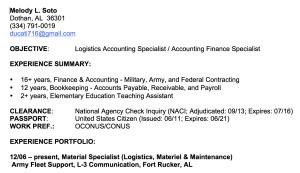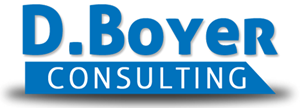Business is mostly conducted via email or phone communications.
Office hours 10:00 a.m. to 6:00 p.m, Mon. - Thurs., and 10:00 a.m. to 2:00 p.m. on Fridays.
SEND EMAIL INQUIRIES DIRECTLY TO:
Dawn.Boyer@me.com
Business is mostly conducted via email or phone communications.
Office hours 10:00 a.m. to 6:00 p.m, Mon. - Thurs., and 10:00 a.m. to 2:00 p.m. on Fridays.
SEND EMAIL INQUIRIES DIRECTLY TO:
Dawn.Boyer@me.com
Business is mostly conducted via email or phone communications.
Office hours 10:00 a.m. to 6:00 p.m, Mon. - Thurs., and 10:00 a.m. to 2:00 p.m. on Fridays.
SEND EMAIL INQUIRIES DIRECTLY TO:
Dawn.Boyer@me.com
Four and a Half Inches and Six Seconds
March 20th, 2014 by Dawn Boyer
Four and a half inches and six seconds.

Ideal resume format – easy to read format and appropriate, concise information for first read
This is the average amount of time and the space at the top of a resume read by the average recruiter to scan a resume for qualified candidates. And, that is after they obtain the resume that has made it through the pre-qualification online recruiting software system. Many resume writers are so focused on cramming every detail of what they have done into a resume and using ‘older standards’ for job searching, they hurt their chances of being seen by the hiring manager.
Resumes are supposed to be ‘teasers’ and a ‘synopsis’ of achievements that give recruiters and headhunters an idea of the job seeker’s capabilities. If the resume covers everything, there is no need to interview an applicant if everything is already in the resume.
The resume should have unique elements in the top four and a half inches of text and keep it as simple as possible to use the white space for easier readability.
Name – make sure your first name, middle initial, and last name are on the top line, but do not add the Jr., Sr., III, Ph.D., P.E., or other identifiers – this may gum up the parsing engine’s ability to cleanly fill in the fields in the online recruiting software.
Address – keep it to the city, state, and zip code only. Otherwise, your employment history and the street address may open you to identity theft when someone goes through your garbage can on the street to search for birthdates and social security or banking records.
Point of Contact Data – should be one phone number (not work – ethics issues; not home – backward research provides street address); one email address, and if you have a LinkedIn URL, don’t put it here, the software may confuse it as an email address.
Objective – should be one line, not a paragraph. The information in that one line should simply be the job title the applicant is seeking with their new employer. Large summary of experience paragraphs waste recruiters’ time and wear out their patience, because they are mostly subjective in information.
Summary of Experience – this is vital when applying for government services (GS) jobs or government contracting (private industry) positions; and it helps recruiters in commercial industry quickly add up the years of experience for general work history. This bulleted list should be short and concise (e.g., XX years, Customer Service, Food Industry; XX years, Recruiting, Retail Industry; XX years, Marketing, Health Care Industry).
If you are aiming for a position in the federal (government) or federal contracting industry, there are three bullets that are important to add just before your chronological of employment history (backwards order). These bullets are required information, which helps the recruiter avoid asking illegal questions.
Security Clearance – whether you have one now or it has expired, noting it will indicate you have been background checked are most likely able to obtain or keep it as a trustworthy individual.
Passport Information – company representatives are not allowed to ask if a job seeker is a US Citizen, but if you provide the information in the resume, it avoids the awkward dancing around the subject, and if not a citizen, it can provide green card status and work permit information.
Work Location Preference – tells where you are willing and able to work, also avoiding having to ask the question, ‘Are you willing to move to this location to work – by the way, the company has no relocation funding.’ If you are in the process of moving to a new location, note that in the resume, which may expand your job considerations.
Planning carefully to ensure your resume has the most concise, and appropriate, but also streamlined set of information will open up more potential for recruiters to read further. Alternatively having exact information avoids wasting your time and theirs when the employment and job factors are not a match. Nothing is more frustrating when a recruiter believes they have a perfect match, then finds out the applicant doesn’t want to move, or needs a work permit that may require months to obtain. Keeping the information to a minimum at the top of the resume makes it easier and quicker to read.
Check these links for related posts:
https://dboyerconsulting.com/bad-resume-advice-15-donts-for-resume-writing/
https://dboyerconsulting.com/electronic-resume-job-hunting-tips/
https://dboyerconsulting.com/how-those-resume-automated-tracking-systems-work/
Dawn Boyer, Ph.D., owner of D. Boyer Consulting – provides resume writing, social media management and training, business development, and human resources consulting. Reach her at: Dawn.Boyer@DBoyerConsulting.com or https://dboyerconsulting.com.
Four and a Half Inches and Six Seconds
March 20th, 2014 by Dawn Boyer
Four and a half inches and six seconds.

Ideal resume format – easy to read format and appropriate, concise information for first read
This is the average amount of time and the space at the top of a resume read by the average recruiter to scan a resume for qualified candidates. And, that is after they obtain the resume that has made it through the pre-qualification online recruiting software system. Many resume writers are so focused on cramming every detail of what they have done into a resume and using ‘older standards’ for job searching, they hurt their chances of being seen by the hiring manager.
Resumes are supposed to be ‘teasers’ and a ‘synopsis’ of achievements that give recruiters and headhunters an idea of the job seeker’s capabilities. If the resume covers everything, there is no need to interview an applicant if everything is already in the resume.
The resume should have unique elements in the top four and a half inches of text and keep it as simple as possible to use the white space for easier readability.
Name – make sure your first name, middle initial, and last name are on the top line, but do not add the Jr., Sr., III, Ph.D., P.E., or other identifiers – this may gum up the parsing engine’s ability to cleanly fill in the fields in the online recruiting software.
Address – keep it to the city, state, and zip code only. Otherwise, your employment history and the street address may open you to identity theft when someone goes through your garbage can on the street to search for birthdates and social security or banking records.
Point of Contact Data – should be one phone number (not work – ethics issues; not home – backward research provides street address); one email address, and if you have a LinkedIn URL, don’t put it here, the software may confuse it as an email address.
Objective – should be one line, not a paragraph. The information in that one line should simply be the job title the applicant is seeking with their new employer. Large summary of experience paragraphs waste recruiters’ time and wear out their patience, because they are mostly subjective in information.
Summary of Experience – this is vital when applying for government services (GS) jobs or government contracting (private industry) positions; and it helps recruiters in commercial industry quickly add up the years of experience for general work history. This bulleted list should be short and concise (e.g., XX years, Customer Service, Food Industry; XX years, Recruiting, Retail Industry; XX years, Marketing, Health Care Industry).
If you are aiming for a position in the federal (government) or federal contracting industry, there are three bullets that are important to add just before your chronological of employment history (backwards order). These bullets are required information, which helps the recruiter avoid asking illegal questions.
Security Clearance – whether you have one now or it has expired, noting it will indicate you have been background checked are most likely able to obtain or keep it as a trustworthy individual.
Passport Information – company representatives are not allowed to ask if a job seeker is a US Citizen, but if you provide the information in the resume, it avoids the awkward dancing around the subject, and if not a citizen, it can provide green card status and work permit information.
Work Location Preference – tells where you are willing and able to work, also avoiding having to ask the question, ‘Are you willing to move to this location to work – by the way, the company has no relocation funding.’ If you are in the process of moving to a new location, note that in the resume, which may expand your job considerations.
Planning carefully to ensure your resume has the most concise, and appropriate, but also streamlined set of information will open up more potential for recruiters to read further. Alternatively having exact information avoids wasting your time and theirs when the employment and job factors are not a match. Nothing is more frustrating when a recruiter believes they have a perfect match, then finds out the applicant doesn’t want to move, or needs a work permit that may require months to obtain. Keeping the information to a minimum at the top of the resume makes it easier and quicker to read.
Check these links for related posts:
https://dboyerconsulting.com/bad-resume-advice-15-donts-for-resume-writing/
https://dboyerconsulting.com/electronic-resume-job-hunting-tips/
https://dboyerconsulting.com/how-those-resume-automated-tracking-systems-work/
Dawn Boyer, Ph.D., owner of D. Boyer Consulting – provides resume writing, social media management and training, business development, and human resources consulting. Reach her at: Dawn.Boyer@DBoyerConsulting.com or https://dboyerconsulting.com.










